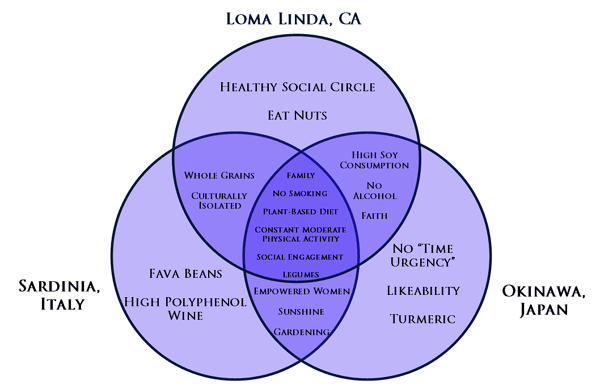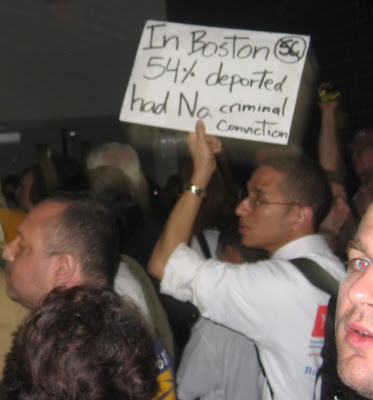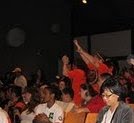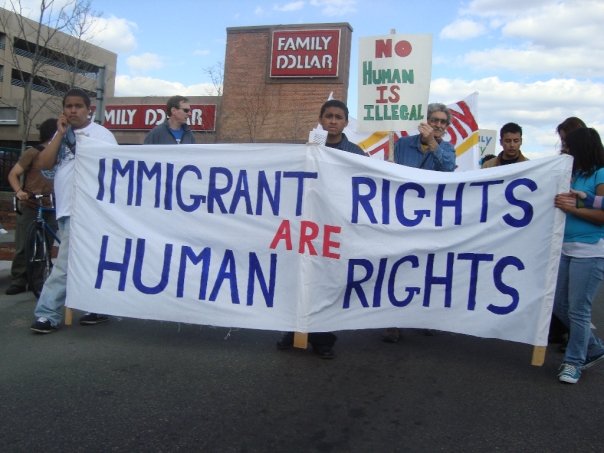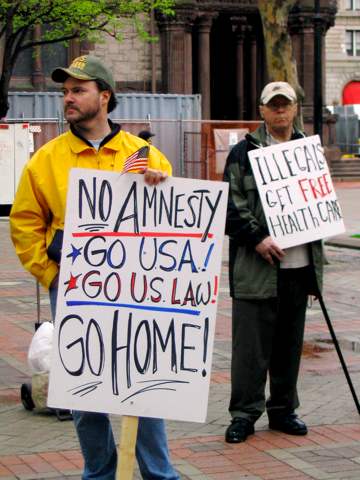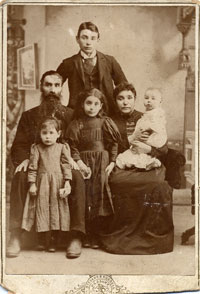by Mindy Fried | Jan 23, 2012 | aging, Blue Zones, engaged aging, family, House Un-American Activities Committee, HUAC, immigrants, loss, resiliency
The great thing about getting older is that you don’t lose all the other ages you’ve been.
Madeleine L’Engle
It is nearly one year ago that my father passed away. On that day, the headline of the Buffalo News proclaimed, “He was a man with a purpose”, with a smaller headline saying “Manny Fried, a guiding presence to area’s actors, writers and social activists, dies at 97.”
Anyone who observed my father as he surpassed the 80-year-old mark, then the 90-year-old mark, and eventually the 97-year-old mark wondered what kept him “so young”. At age 80, he was still jogging. At 90, he was still acting, writing and going to political meetings. And at 95, he performed a one-man autobiographical show, sitting on stage at a reputable Buffalo, New York theater, telling stories about his life with passion and vigor, for over a month of weekend performances. As heirs to 50% of our father’s genes, my sister and I hope that we can only be so lucky! The other side of the family is gifted with tons of creativity, but unfortunately rifled with bi-polar disease and plenty of medical problems. The former we welcome; the latter, we rationalize were the result of poor “lifestyle choices”.

What is it that keeps people ticking for a long time? My father claimed it was a function of good genes from his hearty immigrant parents who lived until they were nearly 100. That, coupled with eating judiciously (he had a sign on his fridge that said “EAT LESS”!), consistent exercise, and staying involved intellectually… He had a rough life trajectory, but developed a resilience he absorbed from his father, who told him, “When you fall down, you get up.” In the 1940s and ’50s, as a labor organizer for the radical Electrical Workers union, he was subpoenaed by the House Un-American Activities Committee. Rather than “taking the 5th”, and saying that he refused to speak on the grounds that anything he said could be used against him, he refused to respond to the Committee’s questions, challenging the right of the Committee to exist. He was unable to find work in the U.S., and ultimately worked for a Canadian company, and also wrote plays about his life experience.
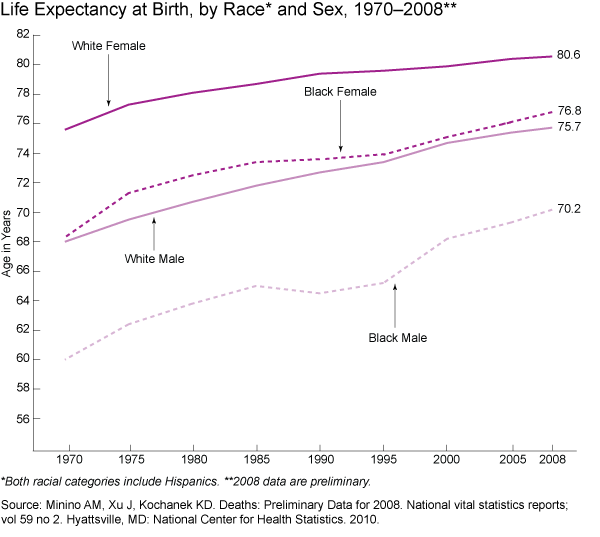
As I move closer to what we define as “young old age” in our society, I am recognizing the elements of my father’s life that continued to fuel his sense of purpose. In fact, just about everything he did mirrors much of the research on aging and longevity as a combination of genetics and lifestyle choices. According to some twin studies, around 20-30% of an individual’s lifespan is related to genes, and the rest is due to individual behaviors and environmental factors which can be modified. Other studies demonstrate that some people have fewer choices than others, particularly given the greater environmental pollution in poorer neighborhoods, and differential access to quality health care for poor people and people of color.
Dan Buettner, in his Blue Zone project, traveled around the world looking for key areas that foster centenarians, people who lived to be 100 or more. He wanted to know what factors contributed to a long life.
Beuttner and his team spent seven years studying four “Blue Zones” where they met people who were aging in an extraordinary way. They interviewed dozens of centenarians, worked with local medical experts, and studied local cultures and lifestyles. Buettner said that each Blue Zone revealed its own recipe for longevity, but many of the fundamental ingredients were the same. Ultimately, he identified nine common lessons of living longer, which he felt were deeply embedded in the cultures they studied.

He found that the Italian island of Sardinia has the highest number of male centenarians in the world; Okinawa, Japan has the longest disability-free life expectancy; and in Loma Linda, Calif., a community of Seventh Day Adventists has a life expectancy that’s around ten years more than that of other Americans. What contributes to these long-living elders? Buettner says that first off, they eat a healthy diet and they get “natural” exercise, where physical activity – like walking around the community or climbing up and down hills – is a natural part of their daily lives.
They remain socially engaged in their communities, whether it be in a village or with a group of strong friends and family in which they are valued. And these centenarians continue to find meaning or purpose in their lives. Buettner describes 104-year-old Giovanni Sannai of Sardinia, saying,
“He was out chopping wood at 9 in the morning…He started his day with a glass of wine and there was a steady parade of people coming by to ask his advice. That’s one of the characteristics of the Sardinian Blue Zone — the older you get, the more celebrated you are.”
For those of us who don’t live on an island, or in a culture that reveres old age, how will we shape our lives moving forward, to maximize healthy aging? It is not “natural” for older people to disengage with their lives; in fact, contemporary aging research provides evidence of the importance of being involved in activities that inspire interest or passion, whether it be with one’s family and friends, in volunteering to help others, or in any endeavor that creates a sense of purpose and brings older people in contact with others.

Clearly, one of the hardest things about growing older is loss – loss of friends and partners whom we outlive. In observing my father, I saw that when many of his contemporaries had passed away, he continued to be surrounded by younger people of all ages who were both inspired by him, and revered him as the “elder” in Buffalo’s labor movement and theater community. I believe that this buffered the pain of overwhelming loss, and provided a critical community of friends and colleagues who sustained him for many years.
How can we create a sense of community – through family and friends, or a social or political group, or an artistic endeavor – that engages us, provides support when needed, and challenges us intellectually?
Aging is not lost youth but a new stage of opportunity and strength.
Betty Friedan
Age is an issue of mind over matter. If you don’t mind, it doesn’t matter.
Mark Twain
I was always taught to respect my elders and I’ve now reached the age when I don’t have anybody to respect.
George Burns
by Mindy Fried | Apr 30, 2011 | immigrants, organizing, social justice
Last night I went to a rally and public hearing in Chelsea, Massachusetts about the “Secure Communities” program. For those of you who are unfamiliar with this program – as I was up until recently – it would increase federal authorities’ access to information about immigrants who are suspected of committing a crime.
Currently, police now have the technology to take the fingerprints of crime suspects and share them digitally with other state officials around the country, to see if they surface other crimes. Under “Secure Communities”, the U.S. Bureau of Immigration and Customs Enforcement (ICE) would have access to the technology of state officials, including suspects’ fingerprints and background information.
The program was supposedly started by ICE to identify serious criminals, but it turns out that the majority of people identified by Secure Communities have minor or no criminal convictions. In fact. in Boston, where the program was piloted, over 50% of the immigrants who were arrested and deported were in this category! Nonetheless, the federal government plans to implement the program – to be administered through state agencies – by 2013.
Given this federal mandate, Massachusetts Governor Deval Patrick has stated that he will comply with the program. Last year, a number of jurisdictions around the country – including San Francisco and Santa Clara – requested to opt-out of the program, but they were given mixed responses from federal officials about how the opt-out process works. First, the administration said that opting-out was allowable, and then they reversed their position, saying that the program was not voluntary. Finally, in an official response, ICE said that “Secure Communities is not voluntary and never has been. Unfortunately, this was not communicated as clearly as it should have been to state and local jurisdictions by ICE when the program began.” What?!
It turns out that Governor Patrick only scheduled these hearings following pressure by community-based organizations that focus on immigrant rights. In response to the “Secure Communities” program, a non-profit called Centro Presente launched a “Just Communities” campaign, in collaboration with the ACLU of Massachusetts and the American Friends Service Committee. Their campaign included high visibility events like rallies in front of the State House, and hand delivery of 1,000 protest postcards to the Governor.
Last night, at the Chelsea hearing, opposition to the program came through loud and clear. Over 200 people jammed into the auditorium of the local high school, mostly to voice their opposition to the “Secure Communities” program. Before the event, there was concern that the Tea Party would show up and be disruptive, as they had been at another hearing in Waltham, Massachusetts. And sure enough, a small but vocal group was there. I happened to sit next to two Tea Partiers. Given the “otherness” with which these folks are painted – and the outrageous behavior of many of their leaders – I felt a certain trepidation and immense curiosity about who they were and what they were thinking throughout the evening.
The hearing began with a public official from the state’s Public Safety office, explaining how the system functioned to track criminals. His voice was monotonous, designed to make the most patient listener edgy. Backed by an uninspired Power Point presentation, he droned on and on, and the crowd got restless. His main points, which he made over and over again, were two-fold. First of all, he said that the “Secure Communities” program only involved procedural changes that would allow state officials to share information about suspects with federal immigration officials. Skirting any potential policy implications, the official described the program as if we, the audience, were simple people who just might not understand the complexities of government. His second message was that this program was going to be implemented, regardless of public concerns, and that the role of the state was to figure out how to best accomplish this goal.
So what was the point of these hearings? Why bother asking us what we think of the program? There was something odd about this introduction that said, ‘basically, this is going to happen anyway,’ when clearly, the door for dialogue and debate is still open…
I wondered if the purpose of this state official’s droning speech was to take up time, so we’d have less time for public testimony. But sure enough, he finally finished and the audience was invited to line up along the side rows of the auditorium to take turns commenting and asking questions.
My Tea Party friends sitting next to me were busy. The woman adjacent to me was videotaping the entire event, and her partner – who carried a series of signs in support of the program – was tallying how many people spoke out for the program and how many spoke out against. Given my curiosity about them, I tried to make small connections. I asked the woman if she could lend me her pen and we smiled at one another. And when people were looking for seats, we both raised our hands and pointed to the seats in our row. I donned my sociological eye and thought of this as a “research-able moment”.

One by one, Latino immigrants shared heart-felt stories of working hard to contribute to this society and their sense of betrayal with this program. The audience cheered in support. Many shared stories of being racially profiled, or stories of friends who were deported unfairly to countries where they were not safe. Again, the audience cheered. An elderly Chinese immigrant spoke with the help of a translator, saying that we are all immigrants to this country, as the crowd stood up and burst into applause. And when he walked away from the microphone, audience members reached out to shake his hand in solidarity. Many white audience members spoke about being second or third generation immigrants, bridging the gaps between first generation immigrants and nearly everyone else in this nation. Again, the audience cheered. A lawyer from the Center for Constitutional Rights told us that there were a couple of lawsuits challenging the legality of the program, and her comments reassured the audience that there was, in fact, recourse. And several others spoke about the danger of “Secure Communities” for women victims of domestic violence as it might deter them from reporting abuse for fear of being deported if they are undocumented.
Interspersed between the 80 or more speakers who opposed “Secure Communities” were roughly 10 Tea Party speakers who supported the program. With some, it was evident that they were Tea Partiers from the moment they opened their mouths, because they started with inflammatory comments like “immigrants are criminals.” But the most controversial Tea Partier who spoke was a Latino man who loudly declared his support for the program because he said it would get rid of immigrants who were criminals. When the crowd began to “boo” him, he shouted defiantly, “Soy Dominicano y soy un Team Partier!” (I am Dominican and a Tea Partier.). And as he loped back to his seat, he nodded to his fellow (white) Tea Partiers, punching his fist in the air.

At the end of the hearing, as we were all putting on our coats and preparing to leave, I turned to my Tea Party friend and asked her what she planned to do with the video she had been shooting. She kindly responded that she would put it up on YouTube for those who weren’t able to be there. I asked if she was a member of the Tea Party, to which she answered, yes, and then replied by asking if I was in the Tea Party too! That surprised me, and made me realize that she wasn’t paying any attention to my hoots of support for those who opposed the program! I wondered what she was thinking about what she had just heard. After all, we had both spent the past hour listening to the same speakers and many of their compelling stories. So I asked her if any of these stories had moved her to think differently. She looked at me with a pained expression, and said, yes, particularly the women who were victims of domestic violence. ‘But what can we do?,’ she implored. ‘We need to deal with the criminals! We need to change the police chiefs!’, she exclaimed. And with that, we walked in separate directions.
What will come of these hearings? Will the Governor take this outcry seriously, and consider opting out of the program? I certainly hope so, but I now realize that the pressure for him to do so comes from a number of directions, including the legal strategies being pursued by advocacy organizations, legal strategies in motion because of a powerful Congresswoman, AND the people in that high school auditorium. I left the meeting feeling satisfied and proud of the amazing people in that room who had the courage to speak out and express their outrage at a policy that doesn’t produce the outcomes it’s intended to produce, and in fact, creates more insecurity in our communities. It was this sense of community – created in that room – that gives me a sense of security.
by Mindy Fried | Aug 16, 2010 | family, immigrants, Jewish history, memories, women and work
There is a rising anti-immigrant tide in this country that frightens me. It feeds on our depressed economy and is fueled by pervasive prejudices against people of color. The anti-immigrant law in Arizona epitomizes its ugly face, and elements of the right wing in this country are embracing the opportunity to assert a narcissistic frame on who is a “real American”.
What would my grandmother say?
Even though this country was founded by immigrants and shaped by the immigrant ethos — the notion of a safe haven — our history is also replete with contradictions, as manifested in the darker side of our past, namely Native American genocide and slavery. Let’s also not forget that even when slavery was abolished, women were second-class citizens in this nation.
When I think of our nation’s history, I think about my own grandmother. She came on her own to this country from Hungary around 1890, traveling on a ship in a wave of Eastern European Jews who were looking for a better life on these shores. The details of her trip are a little fuzzy because she didn’t like to talk about “the past”. She even yelled at my grandfather one time when he started to tell me about his childhood in Hungary. “Saul! She doesn’t want to hear what happened so long ago!”, she snapped at him in her thick Eastern European accent, a comment I regret to this day.

We do know that my grandmother was only 13 years old when she arrived and like so many before and after her, she came through Ellis Island. She lived for a time in Manhattan with relatives who made the same journey. At some point, she got back on a boat and returned to Hungary, to bring her parents back with her. I imagine that by this point, she was fluent in English and that they spoke none. They lived in New York City, and through her teen years she became a skilled seamstress, working in sweatshops by day and studying clothing patterns by night so she could master the skill. She and my grandfather met in New York, where they opened a “dry goods” store, which apparently is a store that sells just about anything. She had, by then, become a master seamstress, and was also a mother of nine children, all of whom attended public schools and ultimately “made good”, achieving the American dream of sorts.
Of her nine children, there was one dentist, two English professors (including my father), a factory owner, an accountant, an architect, a schoolteacher, a bookkeeper and a postal worker. All but one had children of their own, 21 in all, and these children had over 20 children, and on and on it goes. With each successive generation, they are one step away from their heritage, and yet most have tried — in their own ways — to maintain a connection to their history.

How many people in America have some version of this story? Either they came to this country from foreign soil or the parents came or their grandparents came, to create a better life for themselves. They may have been fleeing political persecution or poverty or both. And when they came here, they struggled to learn the language, gain new skills, find jobs, and live the American dream. When they got to this country, they worked very, very hard. Many experienced discrimination, often from people who felt threatened by them in some way or wanted someone to be lower on the totem pole than them.
As Jewish immigrants from Eastern Europe, my grandparents were Caucasian. So while they experienced discrimination as Jews and as poor people, they didn’t experience discrimination because of the color of their skin.
When I hear about the anti-immigrant “movement”, I honestly feel sick. That must have something to do with my grandmother, as I think: Who are these people who hate people who are just arriving? Who are these people who want to close the borders? Who are these people who want to pass laws that allow English only? Who are these people who want to deny a college education to children of immigrants?
And what would their grandmothers say?





